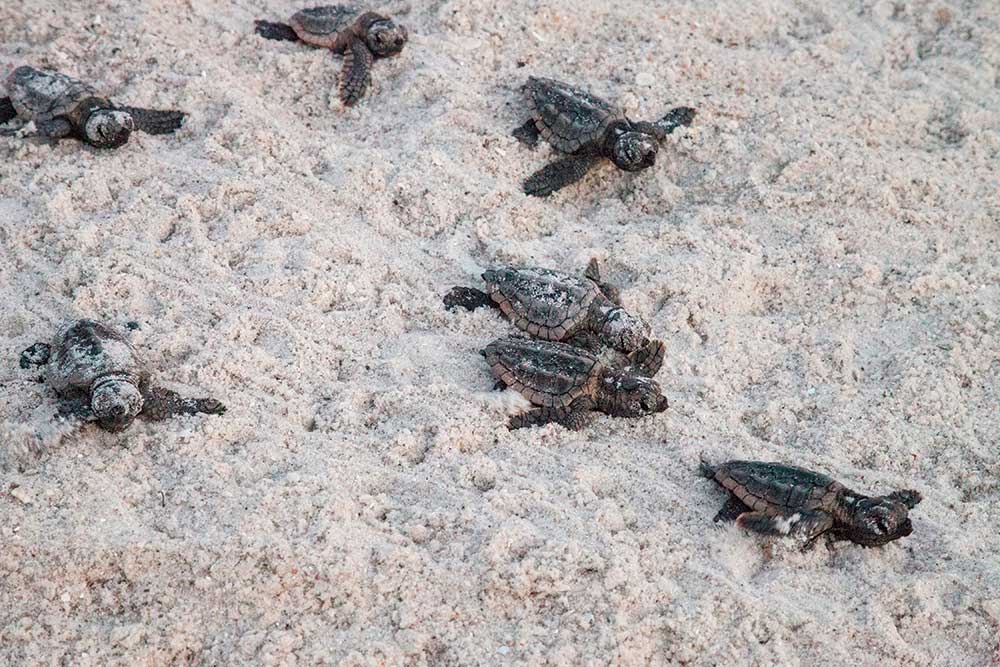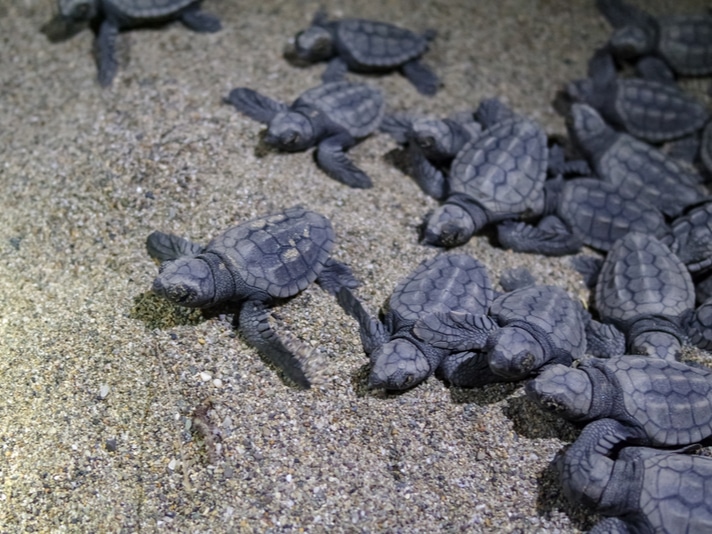The center monitors and counts sea turtle nests from March 1 to October 31 every year.
The Loggerhead Marine Life Center in Juno Beach, FL announced a record 25,025 sea turtle nests for the year 2023. The center counted 216 leatherback turtle (Dermochelys coriacea) nests, 15,672 loggerhead turtle (Caretta caretta) nests, and 9,137 green turtle (Chelonia mydas) nests for the nesting season, which ended October 31.
The center monitors and counts sea turtle nests from March 1 to October 31 every year. That includes a nearly 10 mile stretch of beach comprising, Juno, Jupiter-Carline Park and Tequesta. It appears that 2023 was a good year for sea turtle nestings as record numbers were reported up and down the South Florida coast. It is a great sign that there are thousands of turtles nesting, however, the large numbers of nests won’t necessarily translate to large numbers of hatchlings.

Sea turtle hatchlings heading out to sea. Photo by Sunflower momma/Shutterstock
“What we’re finding is that nests that were laid in June, July and August, when Florida gets very hot, the turtle are hatching at reduced rates, so despite having a really record breaking nesting season here in Florida, our hatchling production rates are going to be quite low,” Dr. Justin Perrault, vice president of research at the Loggerhead Marinelife Center told WPBF 25 News.
The hot temperatures can have negative effects on the hatch rates, and in some cases, can skew the gender ratios of these turtles. For example, the 2018 study, “Environmental Warming and Feminization of One of the Largest Sea Turtle Populations in the World” published in 2018 documented the sex ratios of green sea turtle hatchlings on Australia’s Raine Island and found that the hatchlings there for the last 20 years (since 2018) have been almost exclusively female. The island is home to one of the largest sea turtle nesting beaches in the world, and during the nesting season, more than 200,000 turtles come to deposit their eggs. Females outnumbered male turtles by 116 to 1.
Yet the numbers out of South Florida’s Juno, Jupiter-Carline Park and Tequesta beaches are still encouraging. “This year’s record-breaking numbers are a victory for sea turtle conservation,” Dr. Justin Perrault, vice president of research at LMC, said.


